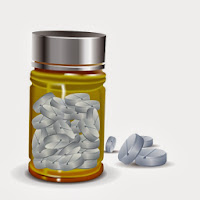Painlessness Achieved
Pain sucks. Whether it is caused by an accident at work, a past sports injury still lingering, or is caused by recent surgeries or treatments, pain can really put a damper on your day. So what can we do to alleviate the pain? There are plenty of ways to cope with and treat pain. As always, make sure to consult your physician before starting any medical or supplemental regime and always follow all printed instructions on the labels of medications and supplements you may take.
Natural Remedies
"Nearly 40 percent of arthritis patients reduced their pain by half after using a topical capsaicin cream for a month, and 60 percent of neuropathy patients achieved the same after 2 months, according to a University of Oxford study." -
8 natural pain relievers. According to this article, Capsaicin, Zyflamend, and Arnica will all three help joints stay soft, supple, and lubricated and helps to ward off the pain caused by arthritis and aging. Natural remedies are usually pretty safe to start with and have been thought to help a certain percentage of people feel less pain in their lives. Be wary, however, of bold claims made by supplemental companies; they also have a responsibility to answer to their stock holders and the supplemental industry is loosely regulated by the FDA so there can be a lot of inaccurate information floating around. Always refer all questions about supplements to your physician.
Prescription Strength Medication

Prescription pain medication is prescribed to treat moderate to severe pain. While highly effective, most pain treatment medication carries the risk of dependency with extended and/or abuse of the medication. Never deviate from the specific instructions given to you by your physician and pharmacist as to how this type of pain medication is to be taken. Remember, prescriptions are only for you and should never be given to somebody who has not been prescribed to use it. Prescription medication should always be used under supervision of a physician so that maximum benefit can be gained by its use.
In Office Pain Treatments
Sometimes your physician may recommend that you get in-office treatment for your pain. These treatments could include chiropractic treatment, interventional pain treatment, and holistic medicine. Not all in-office procedures is better than another and only with the proper diagnosis of your pain will determine what kind of treatment is necessary.
Chiropractic care involves musculoskeletal readjustments and massage therapy. This can remediate slipped vertebra discs, pinched nerves, Sciatica, and more.
Interventional pain treatment involves using injections, or "blocks," to help dull and numb the pain at the nerves that are involved. This treatment is an alternative to chiropractic care when mobility and older age cause discomfort in a chiropractic setting. Holistic medicine includes ancient eastern medicine with modern techniques. Acupuncture is a great example of holistic medicine and has been effective in helping thousands of people live a pain free life.
There are many options available when you are faced with chronic pain. Only your physician can help you determine what course of action to take when dealing with pain. Be safe, be smart, be pain free.
 Prescription pain medication is prescribed to treat moderate to severe pain. While highly effective, most pain treatment medication carries the risk of dependency with extended and/or abuse of the medication. Never deviate from the specific instructions given to you by your physician and pharmacist as to how this type of pain medication is to be taken. Remember, prescriptions are only for you and should never be given to somebody who has not been prescribed to use it. Prescription medication should always be used under supervision of a physician so that maximum benefit can be gained by its use.
Prescription pain medication is prescribed to treat moderate to severe pain. While highly effective, most pain treatment medication carries the risk of dependency with extended and/or abuse of the medication. Never deviate from the specific instructions given to you by your physician and pharmacist as to how this type of pain medication is to be taken. Remember, prescriptions are only for you and should never be given to somebody who has not been prescribed to use it. Prescription medication should always be used under supervision of a physician so that maximum benefit can be gained by its use.


No comments:
Post a Comment